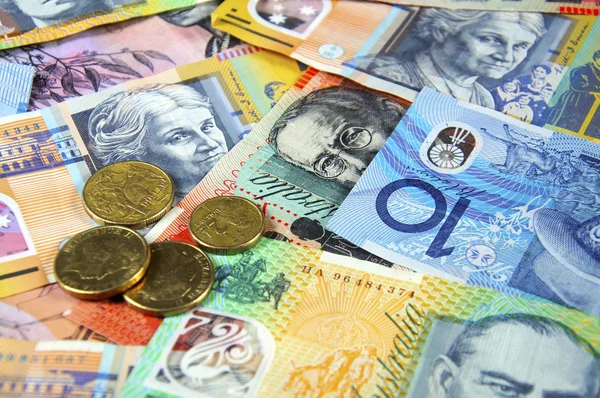Australian Dollar Trims Gains as US Dollar Recovers Ground, Eyes on Initial Jobless Claims
The Australian Dollar (AUD) retained a firm stance on Thursday against the US Dollar (USD), extending gains for a second straight session before paring back slightly as the US Greenback clawed back ground. A mixed bag of Australian trade data and Chinese PMI numbers initially supported the Aussie, while the US Dollar remained under pressure from dismal economic indicators. However, sentiment shifted midday as market participants reassessed fiscal risks in the US and looked ahead to fresh labor market data, notably the weekly Initial Jobless Claims report.
Australia’s Trade Surplus Narrows But Australian Dollar Remains Resilient
Australia’s April trade balance reported a surplus of 5,413 million Australian Dollar , which fell short of market expectations of 6,100 million and the revised 6,892 million figure from March. Despite this underwhelming result, the Australian Dollar held its ground in early trade, buoyed by a resilient export base and positive sentiment from regional economic partners like China.
Exports dropped by 2.4% month-over-month, reversing a 7.2% rise (revised from 7.6%) seen in March. Meanwhile, imports rose by 1.1%, suggesting a rebound in domestic demand, albeit marginal. Although the shrinking trade surplus was a setback, markets seemed to interpret the data as not overly concerning in the broader macroeconomic context.
China’s Caixin Services PMI Offers Support to the Aussie
Positive data from China helped cushion the AUD’s downside. China’s Caixin Services PMI rose to 51.1 in May, improving from 50.7 in April, reflecting sustained growth in the services sector of Australia’s largest trading partner. While not a blockbuster reading, it was enough to calm nerves amid broader worries over China’s industrial slowdown.
China’s services sector performance matters significantly for the Aussie Dollar due to the interconnected trade relationship. Australia’s commodity exports are highly exposed to Chinese demand, and upbeat PMI readings often translate to improved export expectations.
US Dollar Recovers as Traders Digest Weaker Economic Data
The US Dollar Index (DXY) initially slipped following a string of disappointing data but recovered later to hover around 98.80 at the time of writing. The Greenback’s rebound came despite a troubling macroeconomic picture, with ISM services data and employment figures casting doubts on US economic momentum.
The ISM Services PMI for May dropped to 49.9, marking a contraction for the first time in over a year. The previous month’s figure stood at 51.6, while the market had expected a rebound to 52.0. This unexpected contraction underscored the weakening momentum in the service-driven US economy.
Disappointing ADP Employment Report Raises Labor Market Concerns
The ADP National Employment Report also missed expectations by a wide margin. Private sector payrolls rose just 37,000 in May, far short of the forecasted 115,000 and well below April’s revised 60,000 figure (initially 62,000). The shortfall raised fresh questions about the health of the US labor market and the trajectory of consumer demand.
This disappointing report has now put additional pressure on the upcoming Initial Jobless Claims data, with investors anxiously awaiting confirmation of labor market softening that could prompt dovish reassessment by the Federal Reserve.
Trump’s “Big Beautiful Bill” Adds Fiscal Uncertainty
Adding fuel to the fire, House Republicans passed former President Trump’s so-called “Big Beautiful Bill”, a multitrillion-dollar package aimed at tax reforms and expanded spending. Analysts believe this move could significantly widen the US fiscal deficit, leading to a prolonged period of higher bond yields.
Such fiscal expansion during a period of slowing growth raises the specter of stagflation, prompting risk-averse investors to adopt a “Sell America” stance—selling US assets and diverting funds to safe havens or high-yielding alternatives like the Aussie.
US-China Tariff Tensions Resurface, Risk Sentiment Wobbles
Complicating matters further, Trump accused China of violating the recent tariff truce agreed earlier this month in Geneva. He claimed that Beijing had “totally violated its agreement” by failing to lift non-tariff barriers, even as Chinese officials insisted compliance had been met through appropriate suspensions.
These developments have soured risk sentiment globally, especially for emerging markets and trade-dependent economies. Yet, the Australian Dollar has shown resilience, partly due to expectations of Chinese stimulus and its own commodity-backed fundamentals.
Mixed Chinese PMI Figures Cloud Outlook for Australian Dollar
The mixed data from China’s manufacturing and services sectors cast a complex picture for the Aussie. The Caixin Manufacturing PMI fell unexpectedly to 48.3 in May, indicating contraction. However, the NBS Manufacturing PMI offered a glimmer of hope with a rise to 49.5, while the Non-Manufacturing PMI ticked down slightly to 50.3.
These results show that while China is struggling to reignite growth across sectors, pockets of resilience remain. For Australia, continued weakness in Chinese manufacturing could dampen raw material exports, whereas services resilience may offer a buffer.
Australian Growth Slows, But Momentum Isn’t Lost
The Australian Bureau of Statistics (ABS) reported Q1 GDP growth of 0.2% quarter-over-quarter, missing expectations of 0.4% and sharply down from 0.6% in the previous quarter. On an annualized basis, GDP remained steady at 1.3%, still below the forecasted 1.5%.
While disappointing, the slower growth doesn’t yet signal a recessionary trend. Policymakers and analysts attribute the slowdown to global headwinds, especially trade tensions and lagging business investment, rather than domestic structural issues.
PMI Indicators Highlight Slowing Momentum Across Sectors
Australia’s domestic PMI figures further underscore the cautious mood:
- S&P Global Australia Composite PMI declined to 50.5 in May from 51.0, reflecting the eighth month of expansion, albeit at the slowest pace in 2025.
- Australia Services PMI clocked in at 50.6, marking the 16th straight month of expansion, though growth was the slowest in half a year.
- Ai Group Manufacturing PMI improved slightly to -23.5 from -26.5, though still deeply in contraction territory, weighed by project delays and uncertainty in both global and domestic markets.
RBA Leans Dovish, Emphasizes Policy Prudence
Minutes from the Reserve Bank of Australia (RBA) May meeting revealed a cautious stance, with members acknowledging a stronger case for a 25 basis point cut. However, the board preferred a “measured” and predictable approach rather than aggressive easing.
The RBA emphasized that US trade policies pose a key external risk but stopped short of suggesting that domestic conditions necessitate sharp policy adjustments. Notably, they dismissed the need for a 50 bps hike, reflecting balanced concern over inflation and growth.
RBA Officials Warn of Global Drag, See Resilience in Export Sector
RBA Assistant Governor Sarah Hunter added context to the central bank’s view, warning that higher US tariffs could act as a drag on the global economy and, by extension, Australian prospects. She also noted that investment and employment could take a hit if global uncertainty persists.
Still, Hunter expressed optimism in Australia’s ability to weather external shocks, citing export sector strength and expected fiscal stimulus from China as mitigating factors.
Conclusion: Australian Dollar Hinges on US Labor Data and Trade Sentiment
While the Australian Dollar has shown surprising resilience amid weakening domestic data, its recent rally faces new headwinds as the US Dollar regains some traction. With upcoming Initial Jobless Claims expected to reveal more about US labor market health, volatility in the AUD/USD pair is likely to remain elevated.
Traders will closely monitor not only the jobless claims but also ongoing developments around Trump’s fiscal package, US-China trade friction, and Chinese stimulus announcements. In this uncertain environment, short-term Australian Dollar strength may prove fragile unless reinforced by improving global risk sentiment and robust data from China.
[faq-schema id=”39761″]









